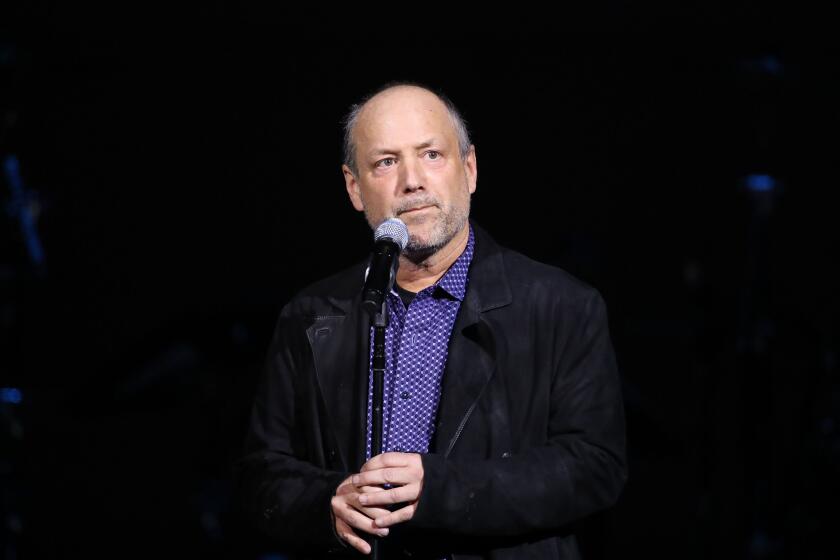Jobless rate falls to 8.6%, sending mixed message on economy
- Share via
The U.S. jobless rate fell sharply last month to its lowest level since March 2009 as employers stepped up their hiring in the latest sign of a steadily improving economy.
The report Friday from the Labor Department wasn’t entirely positive. The unexpectedly big fall in the unemployment rate, to 8.6% from 9% in October, was partly due to droves of workers, mostly women, who dropped out of the labor force, many probably because they saw weak job prospects.
A separate survey of employers in the U.S. showed they added 120,000 net new jobs in November, a relatively modest number given the economy’s needs, but Labor officials said there was more hiring under the radar at start-ups and family enterprises than these data captured.
Still, both worker and employer surveys pointed to a job market that is continuing to make strides since summer, despite ongoing concerns over the European debt crisis, the still-depressed U.S. housing market and the looming budget and fiscal cuts in the U.S.
The Labor Department revised higher the job growth in September and October by a total of 72,000 jobs, meaning job creation over the last three months averaged 143,000 a month. That’s almost double the monthly average from May to August when the debt-ceiling turmoil in Washington and the supply chain disruptions from Japan’s natural disasters took a toll on stock markets, manufacturing and overall confidence.
“The data shows the economy is still not robust but improving at a faster clip,” said Patrick O’Keefe, an economist for the advisory firm J.H. Cohn and a former Labor Department official.
The November job tally got a big lift from retailers, which boosted their head counts by 50,000 -? the second largest holiday hiring in November in a decade. Consumer spending has been surprisingly resilient in recent months, and strong retail sales during the long Thanksgiving weekend will boost confidence if the spending is sustained.
Temporary-help firms and the leisure industry -? hotels and restaurants -? also boosted their payrolls last month by about 20,000 each. Better-paying professional services, such as computer engineers and accountants, added several thousand jobs. Manufacturing payrolls were flat.
Some economists saw little to cheer about in the jobs report, saying the big drop in unemployment was likely to be reversed in the coming months. The jobless rate fell in one month by a similar magnitude last December, to 9.4%, and then again the next month to 9%. The rate went back up to as high as 9.2% this June.
“When you see the unemployment rate fall because people drop out of the labor force, you can’t be too happy about that,” said Dean Baker, co-director of the Center for Economic and Policy Research in Washington. He called the big rate drop a “statistical quirk.”
The unemployment rate is calculated from a survey of people 16 and over who are asked whether they are working or unemployed. Workers are counted as jobless if they haven’t worked in the week they were called and say they were actively looking for work. But over the long recession and slow recovery, many jobless people have become discouraged and have quit searching for work.
Labor Department officials acknowledged there was “somewhat of a discrepancy” between the two surveys ?- the household one showing the big jobless rate decline and the employer survey indicating a moderate 120,000 payroll gains. But Adriana Kugler, the Labor Department’s chief economist, said the household survey was capturing what’s happening at new businesses and the more dynamic aspects of a recovering economy that are often missed by the survey of established companies.
By the household survey, which counts the self-employed as well as unpaid family workers as employed, employment grew by 278,000 last month -? more than double the business survey.
As for the large number of women who exited the labor force last month, Labor Secretary Hilda L. Solis said that may partly reflect the many public school teachers who have been laid off by local governments struggling with budgets and their continuing difficulty in finding new work. In an interview, Solis said she was hopeful that November’s jobless rate would stick and even go down in the months ahead, but said that depended on whether Congress extended the Social Security payroll tax cut for workers as well as the federal extended unemployment benefits.
The latest jobs report comes on the heels of other data suggesting a strengthening of the economy.
Consumer spending, manufacturing and exports, and business investment and confidence all have edged higher since summer.
Other indicators also show hints of improvement in the job market. The National Federation of Independent Business, a lobbying group for small firms, said its survey of members in November showed that average workers per firm rose and that plans to create new jobs nearly doubled.
“Overall, the employment indicators delivered a significant positive signal, still at weak levels but a meaningful movement forward,” said William Dunkelberg, the group’s chief economist.
More to Read
Inside the business of entertainment
The Wide Shot brings you news, analysis and insights on everything from streaming wars to production — and what it all means for the future.
You may occasionally receive promotional content from the Los Angeles Times.











